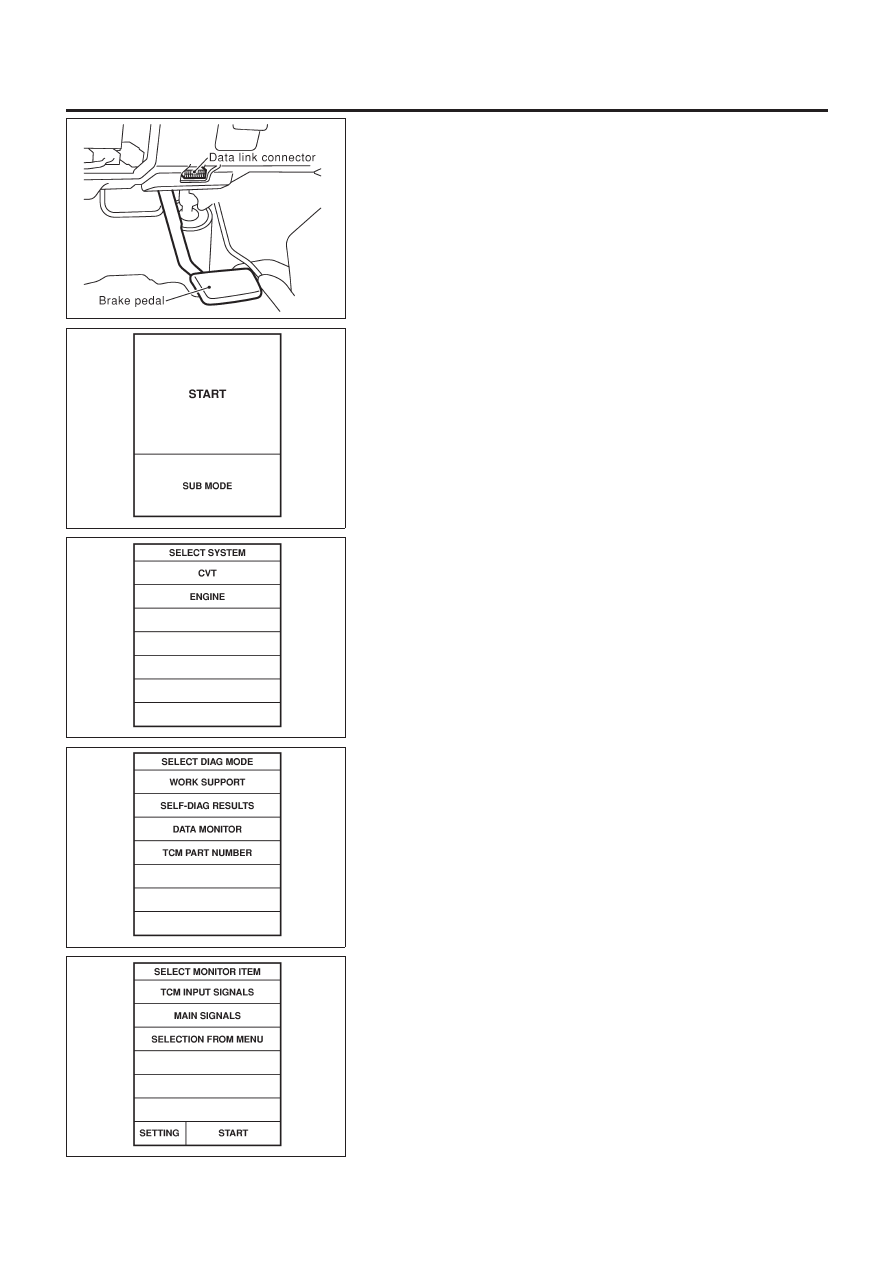Nissan Almera Tino V10 (2001 year). Manual - part 6

SAT228K
CONSULT-II Setting Procedure
NLAT0028S0402
1.
Turn ignition switch “OFF”.
2.
Connect CONSULT-II to data link connector which is located
in the left side lower dash panel.
SAT586J
3.
Turn ignition switch “ON”.
4.
Touch “START”.
SAT250K
5.
Touch “CVT”.
SAT252K
6.
Touch “DATA MONITOR”.
SAT253K
7.
Touch “MAIN SIGNALS” to set recording condition.
8.
See “Numerical Display”, “Barchart Display” or “Line Graph
Display”.
9.
Touch “START”.
TROUBLE DIAGNOSIS — BASIC INSPECTION
Road Test (Cont’d)
AT-55